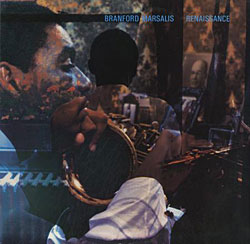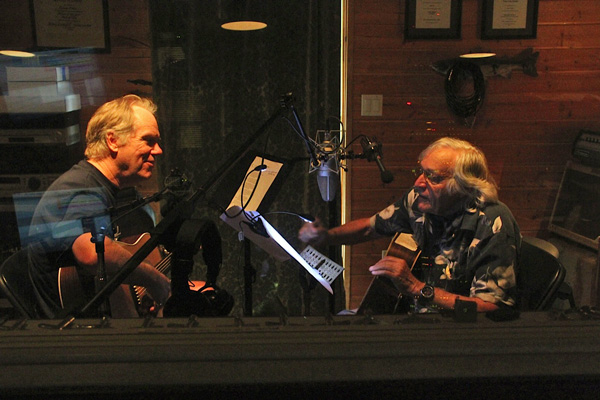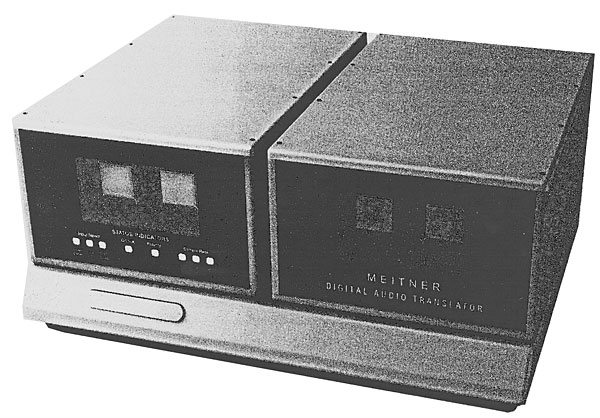LATEST ADDITIONS
Loudon Wainwright III: a Biography in Song
Even when Loudon Wainwright III (left in photo with Ramblin' Jack Elliot) was a young man he was writing autobiographical songs, and his old themes of family, sex, and death resonate more deeply on his new record, Older Than My Old Man Now. He usually performs solo, armed with just an acoustic guitar or a banjo, but most of his recordings present more heavily produced versions of LWIII's music. When I chatted with LWIII in late April I wanted to explore that dichotomy and how those transformations take place.
Record Store Day 2012: The Haul
Initially, I had planned on enjoying a low-key Record Store Day, visiting my local independent shop, Iris Records, and simply leaving it at that. But things never go the way I plan. The allure of J&R Music World in Lower Manhattan, just a short trip across the Hudson, was too great to resist. And if I was going to be in Manhattan, how could I not head over to In Living Stereo? The hi-fi shop was hosting an all-day event with live music, sales on used records, and free beer. It was my duty to attend. And, of course, In Living Stereo is just steps away from my very favorite record shop, Other Music, so I would have to drop by there, too.
Here’s what I picked up along the way:
Occupy Avery Fisher Hall
It wasn't just any part of the Mahler Ninth: It happened during the exceedingly quiet closing measures of the final movement.
It wasn't just any symphony orchestra: It was the New York Philharmonic, which Gustav Mahler directed during the last two years of his life.
Recording of May 2012: Centennial
 Ryan Truesdell: Centennial: Newly Discovered Works of Gil Evans
Ryan Truesdell: Centennial: Newly Discovered Works of Gil EvansRyan Truesdell, conductor; 35 musicians including those mentioned in text, plus: Scott Robinson, Charles Pillow, reeds; Greg Gisbert, trumpet; Marcus Rojas, tuba; Romero Lubambo, guitar; Lewis Nash, drums
ArtistShare AS0114 (CD). 2012. Ryan Truesdell, prod.; James Farber, eng. DAD. TT: 74:18
Performance *****
Sonics ****½
It is dreamlike when the opening track, "Punjab," begins so softly, with the tapping of a tabla. Exotic woodwinds, perhaps English horn and bassoon, murmur in the left channel, whisper in the right. It is dreamlike because Gil Evans died in 1988, yet this unfamiliar music sounds like him, and when suddenly that deep, solemn brass figure looms out of the right channel, it could only be him. More instruments enter, and more motifs, with brighter colors from alto saxophone and flute. Like all the greatest Gil Evans music, "Punjab" creates its own world of high drama and mysterious allusion. It belongs in the exalted company of such Evans masterpieces as Out of the Cool and Sketches of Spain. And it is new.
The Handsome Philips Fidelio L1
Headphones have changed a lot over the last 20 years. First they were accessories; then they were legit listening devices but as ugly as an outhouse; then they were bright plastic necklaces and a rapper's gravy train; but of late, they're becoming a very human interface to our tunes, designed to sound good, look good, and feel good.
The Philips Fidelio L1 is a perfect example of such a headphone.
Meitner IDAT D/A processor
A more creative engineer may add a few tricks of his own to the standard brew. Bigger and better regulated power supplies, careful circuit-board layout, tweaky passive components, and attention to detail will likely make this designer's product sound better than the same basic building blocks implemented without this care. Indeed, the vast range of sonic flavors from digital processors containing very nearly the same parts attests to the designer's influence over a digital processor's sound.
Ed Meitner: Audio Maverick
 Ed Meitner is one of those rare individuals who charts his own course in audio product design. From his platterless turntable of the mid-1980s to his new Intelligent Digital Audio Translator (IDAT, reviewed elsewhere in this issue), Ed Meitner's products have been distinguished by original thinking and innovative engineering. Although not all his designs have been commercially successful, in each he has attempted to advance the state of the art by rethinking fundamental principles.
Ed Meitner is one of those rare individuals who charts his own course in audio product design. From his platterless turntable of the mid-1980s to his new Intelligent Digital Audio Translator (IDAT, reviewed elsewhere in this issue), Ed Meitner's products have been distinguished by original thinking and innovative engineering. Although not all his designs have been commercially successful, in each he has attempted to advance the state of the art by rethinking fundamental principles.
Ed is also pursuing an ambitious project that would radically change the way recordings are made. It began when he recorded an electric guitar through a 10" guitar-amp loudspeaker and was dismayed that it was impossible to even come close to capturing and realistically reproducing this apparently simple sound through another 10" speaker. This experience launched his investigation into why reproduced sound is never mistaken for live music, a quest that may result in a radically new recording technique.
The Fifth Element #71
In 2009, I wrote about Luxman's entry-level solid-state integrated amplifier, the L-505u ($3700), and their near-universal (no Blu-ray) disc player, the DU-50 ($4990, now discontinued). I was very impressed by their performance and their quality at those prices. Indeed, I think I commented on these models in no fewer than five columns back then.
Recording of January 1988: Renaissance
 Branford Marsalis: Renaissance
Branford Marsalis: RenaissanceBranford Marsalis, tenor & soprano sax; Kenny Kirkland & Herbie Hancock, piano; Bob Hurst & Buster Williams, bass; Tony Williams, drums
CBS FC 40711 (LP). Dennis Ferrante, Bob Margoleff, Howard Siegel, engs.; Delfeayo Marsalis, prod. DDA. TT: 57:09
These are heady days for those who believe that jazz may have reached its height in the mid- to late '60s, before its disastrous 15-year romance with fusion. With such strong new talents as the Marsalis and Brecker brothers and Chico Freeman embracing the spirit of that time, and fusion-scarred veterans like Freddie Hubbard and Joe Henderson returning to the basics of acoustic trios, quartets, and quintets in recent recordings and concerts, jazz has attained a new and cherished seriousness valued all the more for its unexpectedness.







